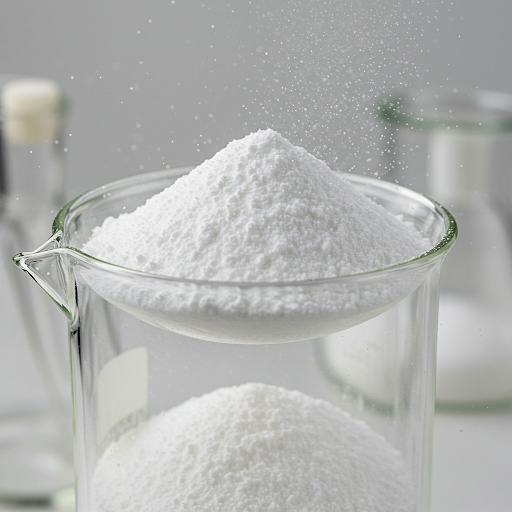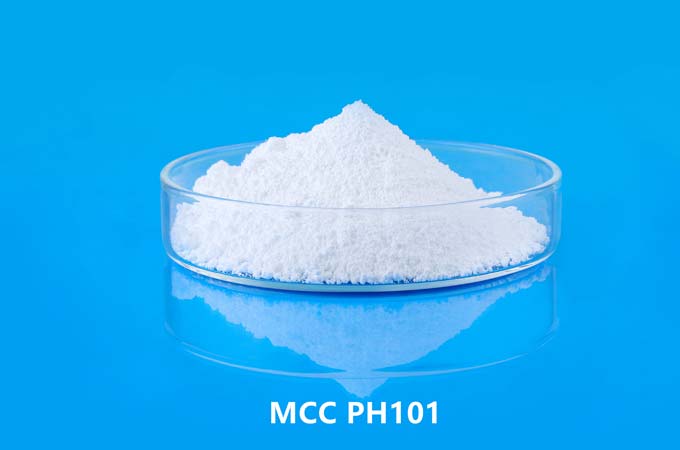Introduction
Methylcellulose (MC) and microcrystalline cellulose (MCC) are both derivatives of cellulose, offering unique properties that make them valuable across various industries. Methylcellulose is chemically modified to enhance its solubility and gelation properties, while MCC is a refined form of cellulose known for its stability and compressibility. This discussion will explore their chemical characteristics, applications, and key differences, providing a comprehensive overview of how these two cellulose derivatives function in various fields.
What Is Methylcellulose
Methylcellulose is a cellulose derivative produced through chemical modification, where hydroxyl groups are replaced with methoxy groups. It dissolves in cold water to create a clear, viscous solution and exhibits thermal gelation, meaning it forms a gel when heated. These unique properties make it highly versatile. Methylcellulose is primarily used as a thickener, stabilizer, and binder in industries such as pharmaceuticals, food, and cosmetics due to its water solubility and thermal gelation properties.
What Is Methylcellulose Made From
Methylcellulose is made from cellulose, a natural polymer found in plant cell walls, typically derived from wood pulp or cotton fibers. The production process involves chemically modifying cellulose by treating it with methyl chloride in the presence of an alkali (such as sodium hydroxide). This process replaces some of the hydroxyl (-OH) groups in the cellulose structure with methyl (-CH₃) groups, making the compound water-soluble and giving it unique gel-forming properties when mixed with water.

Methylcellulose Powder in Kima Chemical
What Is Microcrystalline Cellulose
Microcrystalline cellulose (MCC) is a refined, partially depolymerized cellulose obtained from plant fibers. It appears as a white, odorless, and tasteless powder with excellent compressibility and stability. MCC is primarily used as an excipient, providing binding, bulking, and anti-caking properties. Its high purity and inertness make it ideal for applications requiring a stable, non-reactive filler. In manufacturing, precise control over particle size and purity ensures consistent performance and compatibility with a wide range of formulations and processing methods.

Microcrystalline Cellulose in Kima Chemical
Methylcellulose vs. Microcrystalline Cellulose: Key Differences
1. Chemical Composition
Methylcellulose is derived from cellulose by chemically substituting hydroxyl groups with methoxy groups (-OCH₃). This substitution alters the cellulose chain’s reactivity and interaction with water. The degree of substitution (DS) impacts its solubility and gelation properties, creating a more hydrophilic molecule.
Microcrystalline Cellulose is produced by hydrolyzing cellulose, removing amorphous regions and leaving a crystalline core. It retains the original glucose polymer structure of cellulose, but with shorter chains, without undergoing any substitution reactions.
2. Water Interaction
Methylcellulose is water-soluble, forming a clear, viscous solution when dissolved in cold water. The methoxy group substitutions enhance hydrophilic interactions, making the polymer easily dispersible in aqueous systems. Its solubility is temperature-dependent, exhibiting gelation at higher temperatures.
Microcrystalline Cellulose is insoluble in water due to its crystalline structure, which limits its ability to form solutions. Instead of dissolving, MCC can absorb water and swell, maintaining its fibrous integrity without breaking down into a molecular solution.
3. Thermal Behavior
Methylcellulose exhibits thermal gelation, meaning it forms a gel as the temperature increases, due to polymer-polymer interactions and dehydration of the methoxy groups. This unique property is reversible; the gel returns to a liquid state when cooled, making its behavior temperature-sensitive.
Microcrystalline Cellulose remains thermally stable under temperature changes, without undergoing gelation or other phase changes. Its crystalline regions resist deformation or melting, maintaining structural integrity even under elevated temperatures, making it highly heat-resistant.
4. Molecular Structure and Morphology
Methylcellulose molecules are long-chain polymers with varying degrees of substitution along the cellulose backbone, creating a more flexible structure in water. The methoxy groups influence the polymer’s ability to form entangled networks, especially when interacting with heat.
Microcrystalline Cellulose consists of rigid, crystalline regions resulting from the removal of amorphous cellulose during hydrolysis. Its compact, crystalline morphology results in a solid, particulate form with low reactivity and a highly ordered molecular structure, providing mechanical stability.
| Feature | Methylcellulose (MC) | Microcrystalline Cellulose (MCC) |
| Chemical Composition | Cellulose with substituted hydroxyl groups (-OCH₃) | Cellulose with shorter chains, no substitutions |
| Water Interaction | Water-soluble, forms clear solution | Insoluble in water, absorbs water and swells |
| Thermal Behavior | Exhibits thermal gelation, reversible | Remains thermally stable, no gelation |
| Molecular Structure and Morphology | Long-chain polymer with varying degrees of substitution | Rigid, crystalline regions, compact particulate form |
What Is Methylcellulose and Microcrystalline Cellulose Used For
Methylcellulose and microcrystalline cellulose (MCC) are both derivatives of cellulose, utilized across various industries due to their unique properties. However, they have distinct applications based on their chemical structures and functional characteristics.
Food Industry
Methylcellulose acts as a thickening agent and emulsifier, enhancing texture and stability in sauces, dressings, and ice creams. Its ability to form gels when heated is especially valuable in creating low-fat and gluten-free products.
Microcrystalline Cellulose is used as a bulking and anti-caking agent, it improves texture in food products and prevents clumping. MCC is often found in powdered foods and dietary supplements.
Pharmaceuticals
Methylcellulose serves as a binder and thickener in tablet formulations and is also employed as a laxative due to its ability to absorb water and promote bowel movements.
Microcrystalline Cellulose commonly functions as a filler and binder in tablets, enhancing uniformity, stability, and improving disintegration and dissolution rates.
Cosmetics
Methylcellulose is utilized in lotions and creams for its emulsifying properties, helping to stabilize formulations and improve product consistency.
Microcrystalline Cellulose acts as a thickener and texturizer in personal care products, enhancing stability and the sensory attributes of creams and lotions.
Industrial Applications
Methylcellulose is employed in construction materials such as dry mix mortars and adhesives, improving water retention and workability.
Microcrystalline Cellulose is used in the production of plastics and as a reinforcing agent in composites due to its mechanical strength and rigidity.
| Industry | Methylcellulose (MC) | Microcrystalline Cellulose (MCC) |
| Food | Thickening agent, emulsifier, low-fat/gluten-free products | Bulking agent, anti-caking agent, powdered foods |
| Pharmaceuticals | Binder, thickener, laxative | Filler, binder, tablet formulation |
| Cosmetics | Emulsifier, lotion/cream consistency | Thickener, texturizer, personal care products |
| Industrial | Construction materials, adhesives | Plastics production, reinforcing agent |
Side Effects of Methylcellulose and Microcrystalline Cellulose
Methylcellulose and microcrystalline cellulose (MCC) are widely used as food additives, pharmaceutical excipients, and dietary fiber supplements. While generally recognized as safe, they may cause mild to moderate digestive issues, especially when consumed in large quantities. Methylcellulose, being a soluble fiber, absorbs water and expands in the intestines, which can lead to bloating, gas, and mild abdominal discomfort. If not taken with enough water, it may cause constipation instead of relieving it. On the other hand, excessive intake may result in loose stools or diarrhea due to increased water absorption in the gut. In rare cases, some individuals may experience allergic reactions, including skin rashes, itching, or breathing difficulties. Additionally, since methylcellulose swells upon contact with liquid, consuming it without sufficient water could pose a choking hazard, especially for individuals with swallowing difficulties.
Microcrystalline cellulose, a refined form of cellulose used as a filler in food and pharmaceuticals, is an insoluble fiber that may cause bloating, gas, or mild stomach irritation when ingested in large amounts. Similar to methylcellulose, MCC can lead to diarrhea or constipation, depending on the individual's digestive response and water intake. Some people with pre-existing digestive conditions, such as irritable bowel syndrome (IBS) or Crohn’s disease, may find MCC irritating to their gastrointestinal tract. Though rare, hypersensitivity reactions to MCC have been reported, including mild allergic symptoms.
However, since both methylcellulose and MCC are non-toxic and non-absorbable by the body, their side effects are typically limited to the digestive system and resolve once consumption is reduced or discontinued.
Conclusion
In summary, both methylcellulose and microcrystalline cellulose serve important roles in diverse applications, driven by their distinct chemical properties. Methylcellulose's ability to dissolve in water and form gels makes it suitable for use in food, pharmaceuticals, and cosmetics, where texture and stability are critical. In contrast,
microcrystalline cellulose's crystalline structure provides excellent stability and mechanical strength, making it an ideal choice as a filler and binder in pharmaceutical formulations and various industrial applications. Understanding these differences aids in selecting the appropriate cellulose derivative for specific needs across multiple industries.
FAQs about Methylcellulose and Microcrystalline Cellulose
1.Is it safe to take methylcellulose daily?
Yes, methylcellulose is safe for daily use when taken as directed. It is a non-toxic, soluble fiber that helps with digestion and promotes regular bowel movements. However, it is essential to drink enough water to prevent constipation or choking. Consult a doctor if you experience persistent digestive discomfort.
2.What is a natural alternative to methylcellulose?
Natural alternatives to methylcellulose include psyllium husk, flaxseed, chia seeds, and oat fiber. These plant-based fibers provide similar digestive benefits, such as promoting bowel regularity and supporting gut health. Psyllium husk, in particular, forms a gel-like consistency similar to methylcellulose and is often used in fiber supplements.
3.Is methylcellulose in food safe?
Yes, methylcellulose is considered safe in food and is approved by regulatory bodies like the FDA. It is commonly used as a thickener, emulsifier, and stabilizer in processed foods, including gluten-free products and plant-based meats. Since it is not absorbed by the body, it passes through the digestive system without harmful effects.
4.What does microcrystalline cellulose do to the body?
Microcrystalline cellulose acts as an insoluble fiber that helps improve digestion and bowel regularity. It is used as a filler and anti-caking agent in food and medications. While the body does not digest or absorb it, MCC adds bulk to stool, promoting healthy digestion without providing calories or nutrients.
5.Is microcrystalline cellulose safe to ingest?
Yes, microcrystalline cellulose is safe to ingest and is commonly found in food, supplements, and medications. It is non-toxic, hypoallergenic, and FDA-approved. Since it is an insoluble fiber, excessive consumption may cause bloating or digestive discomfort. Drinking plenty of water can help prevent any potential side effects.
6.Does microcrystalline cellulose raise blood sugar?
No, microcrystalline cellulose does not raise blood sugar because it is an indigestible fiber that the body does not break down into glucose. Unlike carbohydrates, MCC passes through the digestive system without affecting blood sugar levels, making it safe for people with diabetes or those managing blood sugar levels.
 English
English 日本語
日本語 français
français Deutsch
Deutsch Español
Español italiano
italiano русский
русский português
português العربية
العربية Türkçe
Türkçe Nederland
Nederland





